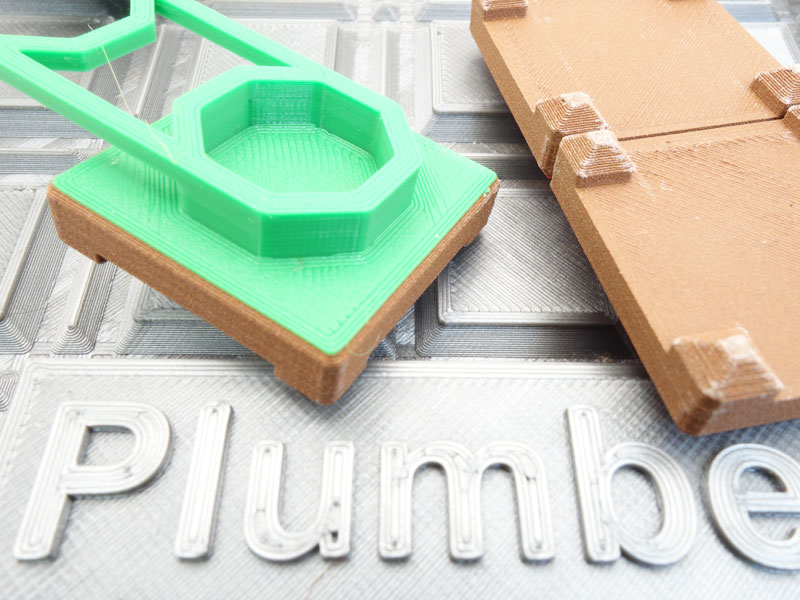Hi iMaterialise fans,
Plumber’s Nightmare is a multiple-challenge sliding-piece puzzle in the same vein as the famous Thinkfun Rush Hour puzzle invented by Nob Yoshigahara. The puzzle has seven pieces that slide in a square grid. Each piece has two squares that is connected by a bridge. The bridges have different heights and orientation. I designed this puzzle originally in 2003. George Miller 3D-printed its first prototype. Jimmy Stephens developed a large set of computer-generated challenges.
The prototyping proved to be a nightmare. Whereas one sliding direction is simple (Rush Hour), it is a fundamentally difficult problem to have squares slide in a grid in two directions. The solution was the Recent-Toys Zeparate mechanism, designed by Guido Lap and Leighton Rees, which features weighted squares with downward pins at their corners sliding over a double-rails grid. Also the height of the pieces is a problem, as one can easily topple the pieces. This was solved by keeping the bridges as low as possible. Another challenge is pushing the pieces, as especially the angled pieces want to turn when pushing sideways. This was solved by making the bridges very hollow, so one can push a square tile through a hole. As a result, any push results in a pleasant parallel slide.
The shape of the pieces was also changed. Originally, all bridges were straight. Raf Peters suggested to construct bridges of sections at 45-degrees angles. Not only does this look better and make the bridges wide. It also makes the gameplay more interesting, as bridges can now bump into each other in different ways.
The puzzle also has had multiple themes. Originally, I called it ConsLide: “connected sliding”. Raf Peters came up with a firefighter theme: brave firemen running around with ladders. Alas, the firemen would need to be tall, resulting in toppling of the pieces. We also considered the aquatic theme “bridges and barges”. Steve Wagner came up with Plumber’s Nightmare, where the plumber needs to get a missing piece of pipe into a constrained space. I really like that theme, though it does not match with the final successful prototype.
The tiles of the prototype were 3D-printed of copper-filled filament and a 90% printing density. As a result, each of the seven pieces weights a whopping 30 gram, making the pieces very stable. The top layer and the bridges were 3D-printed in regular colourful PLA plastic.
I should also mention Scott Kim. One of Scott’s puzzle in the Heaven & Earth video game from 1992 featured among others a sliding-piece puzzle, where some of the sliding pieces were invisibly connected. So now finally, 20 or 30 years later, depending on how you count, we have a well-working physical of this puzzle concept.
Watch the YouTube video.
Buy the puzzle at my iMaterialise Shop.
Read more at the Non-Twisty Puzzles Forum.
Check out the photos below.
Enjoy!
Oskar







